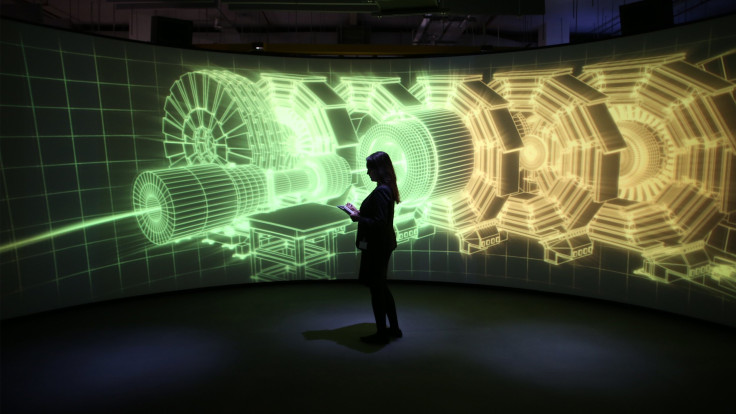CERN Update: Large Hadron Collider Resumes Smashing Protons After Briefly 'Chasing Clouds'

After temporarily halting data collection to “chase clouds” in its nearly 17-mile ring, CERN’s Large Hadron Collider (LHC) is back to doing what it does best -- colliding proton beams to detect new particles that might fundamentally alter our understanding of the universe.
“At present, 152 bunches of protons are circulating in each direction in the 27 kilometer machine, but the goal is to increase the number of protons over the next two weeks to close to 1,000 bunches per beam,” CERN said in a statement released Tuesday.
Days after the world’s largest and most powerful particle accelerator -- credited with the discovery of the “God particle” in 2012 -- restarted for “Season 2” early in June, it was shut down briefly so that residual gas molecules trapped on the surface of the walls of the beam pipes could be removed. If these gas molecules, which contain electrons, had not been removed, it could have resulted in an avalanche of negatively-charged particles -- eventually forming an “electron cloud” dense enough to disrupt the high-energy beam in the collider.
“The operators therefore need to dissipate the electron clouds before the LHC can run with more proton bunches. To do that, they've developed a beam scrubbing technique that involves circulating enough protons to release as many trapped gas molecules as possible from the metal and to reduce the rate of production of electrons on the walls of the pipe,” CERN said in a statement released late last month.
Now, after a successful cleaning operation, the collider is functioning at its record-breaking energy of 13 teraelectronvolts. It will continue data collection until the end of July, after which it will enter a new cleaning phase that would further increase the beam intensity by reducing the space between the proton bunches.
As CERN explains, the particles are so tiny that the task of making them collide is “akin to firing two needles 10 kilometers [6.2 miles] apart with such precision that they meet halfway.”
So, if the circulating beams carry more proton bunches spaced closer to each other, the chances of collision increase.
The collisions would send showers of particles through LHC’s detectors, allowing scientists to discover exotic new particles that could either bolster or “break” the Standard Model of physics and provide vital clues to the composition of dark matter.
© Copyright IBTimes 2024. All rights reserved.











